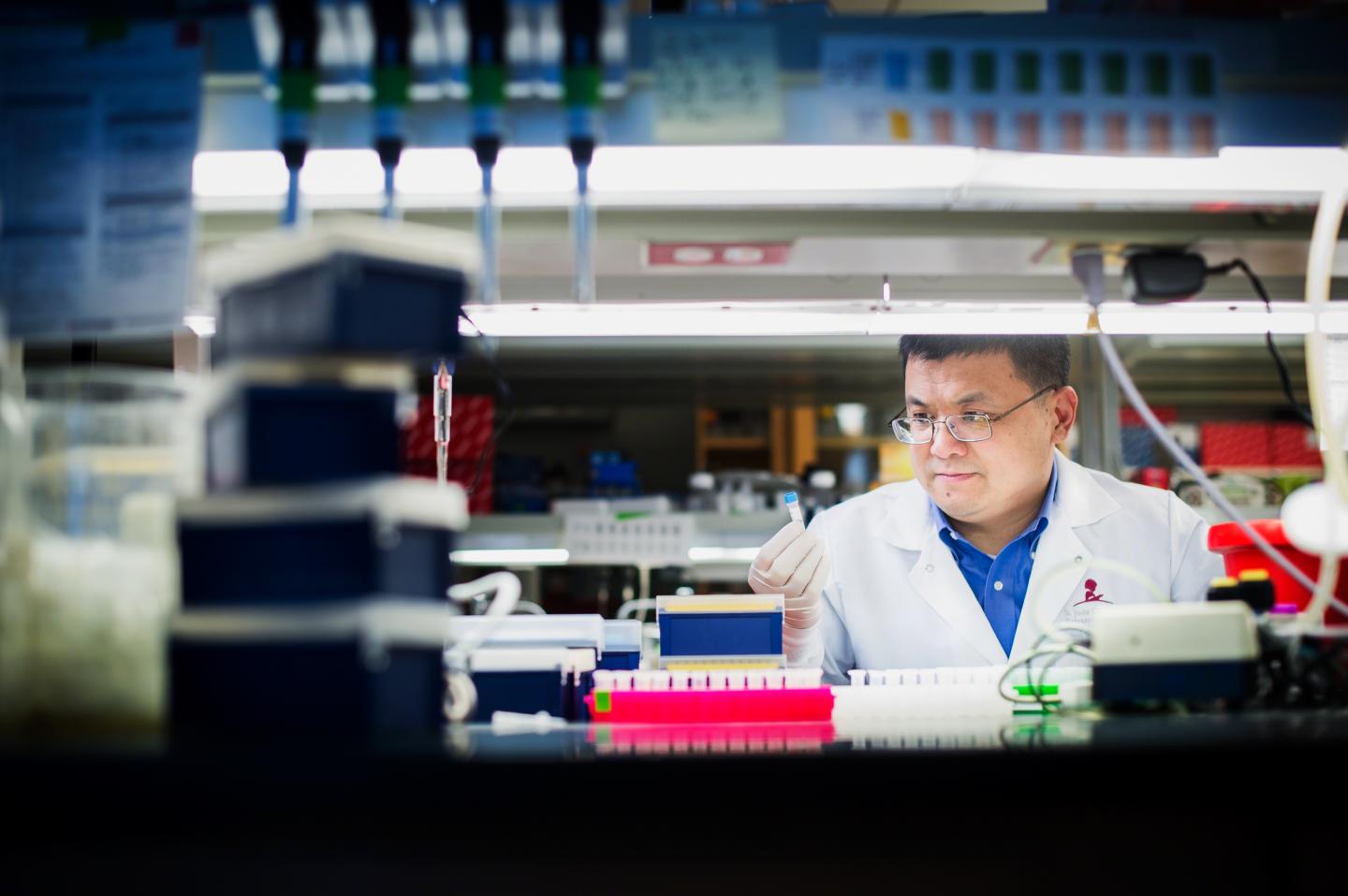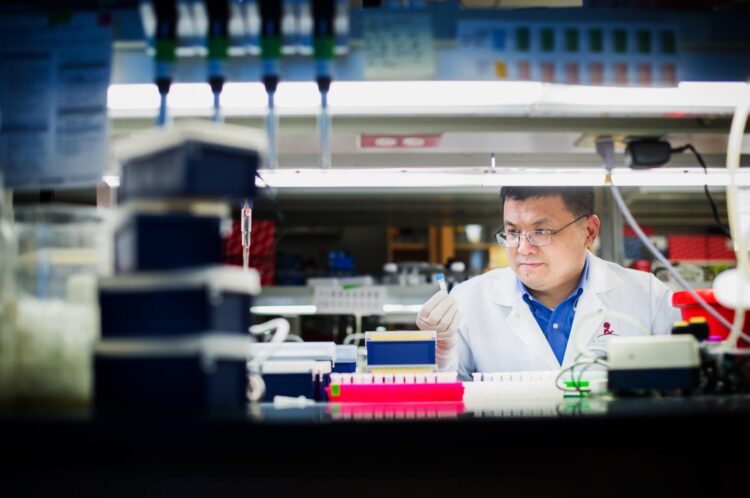A metabolic control pathway that regulates T follicular helper cells offers targets for drugs to stimulate the adaptive immune response

Credit: St. Jude Children’s Research Hospital
Immunologists at St. Jude Children’s Research Hospital have identified a biological pathway that selectively controls how key immune cells, called T follicular helper cells, mature into functional components of the immune system.
The finding offers the promise of developing drugs to activate the metabolic pathway to enhance the effectiveness of vaccines, including those that protect against COVID-19. Such medications could stimulate the immune system to respond more vigorously following immunization to produce more antibodies against a virus or bacterium.
The work also lays the foundation for drugs that dial down the pathway to alleviate autoimmune diseases such as lupus. In such disorders, an overactive immune system produces antibodies that attack the body’s own tissues.
Led by Hongbo Chi, Ph.D. of the Department of Immunology, the researchers published their findings today in Nature.
Regulating the adaptive immune response
Chi and colleagues identified a metabolic control pathway that selectively regulates the development of specialized immune cells in the adaptive immune system. These cells are called T follicular helper cells.
The adaptive immune system is so named because when the body is infected by viruses or bacteria, it learns to target and attack them. T follicular helper cells activate the component of the adaptive immune system called humoral immunity. While humoral immunity attacks invaders circulating outside cells largely via the generation of antibodies, the other adaptive immune system component, cellular immunity, targets invaders inside infected cells.
In their experiments, the researchers sought to discover whether a metabolic control pathway existed that modified the T follicular helper cells to activate them. When such cells are activated, they help antibody-producing cells, called B cells, to mature and to generate infection-fighting antibodies.
Discovering a key pathway
To discover a possible control pathway, Chi and his colleagues used genetic techniques to delete in the T cells multiple enzymes known to be elements of such metabolic control pathways. Then, the scientists introduced the deletion-engineered T cells into mice followed by infection with a virus and tested whether the T cells lacking the enzyme were functional.
Their experiments revealed that one metabolic control pathway, called the CDP-ethanolamine pathway, selectively regulated the T follicular helper cells.
“This finding was a big surprise,” Chi said. “First of all, this pathway was considered to have a housekeeping function leading to the production of building blocks for the cell membrane. But we discovered that it has a major signaling function. And secondly, we were surprised that this pathway–and not other parallel pathways of this type–was the only one involved in regulating T follicular helper cells.”
As a complementary method to determine if the pathway selectively regulated the T follicular helper cells, the researchers deleted each of the key enzymes they identified in the CDP-ethanolamine pathway. They found that deletion of these enzymes, but not those of other parallel regulatory pathways, selectively impaired development of the T follicular helper cells, but not overall immune function.
Importantly, said Chi, those key enzymes could be targets for drugs that either enhance or inhibit the pathway, and thus the activity of the T cells.
“We are now exploring whether we can enhance the effectiveness of vaccines by using drugs that activate the pathway, to help these T cells mobilize the immune system to generate antibodies in response to a vaccine,” he said.
“On the other hand, to treat autoimmune disease, we’re interested in developing new ways to inhibit this pathway,” he said. “This approach is promising because we know that such activation or inhibition is highly selective for T follicular helper cells and would not affect other immune functions.”
The researchers are also delving into the structural mechanisms by which the enzymes work–insights that could offer such drug targets, Chi said.
###
Authors and funding
Guotong Fu, Ph.D., St. Jude Immunology, is the first author. The other St. Jude authors are Clifford Guy, Nicole Chapman, Gustavo Palacios, Jun Wei, Peipei Zhou, Lingyun Long, Yong-Dong Wang, Chenxi Qian, Yogesh Dhungana, Hongling Huang, Anil KC, Hao Shi, Sherri Rankin, Scott Brown, Amanda Johnson, Randall Wakefield, Camenzind Robinson, Jiyang Yu and Suzanne Jackowski. Additional authors are Xueyan Liu, University of New Orleans, and Anthony Sheyn, University of Tennessee Health Science Center.
The research was supported in part by the National Institutes of Health (AI105887, AI131703, AI140761, AI150241, AI150514, CA221290), Lupus Research Alliance and ALSAC, the fundraising and awareness organization of St. Jude.
Media Contact
Katy Hobgood
[email protected]
Original Source
https:/
Related Journal Article
http://dx.





